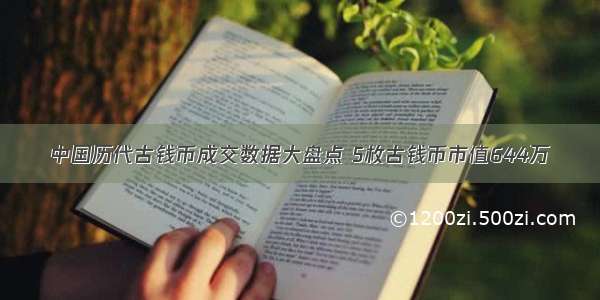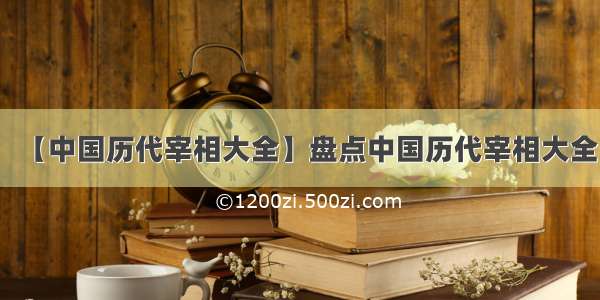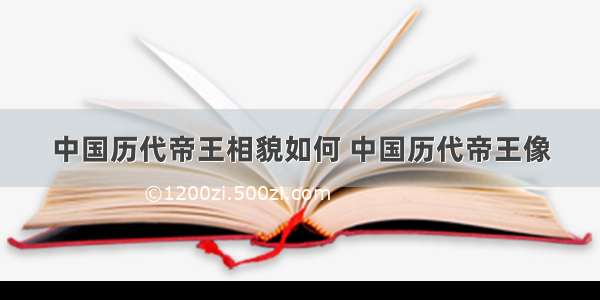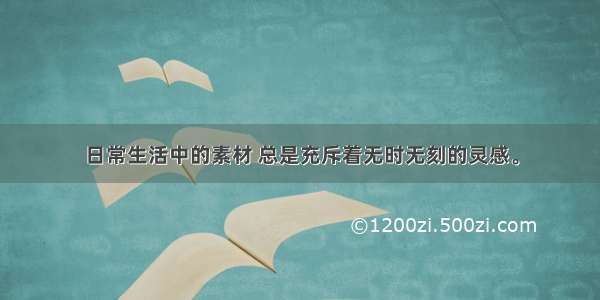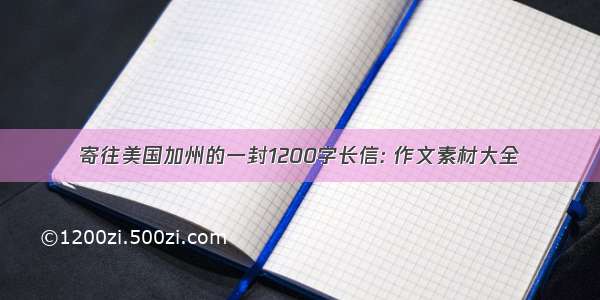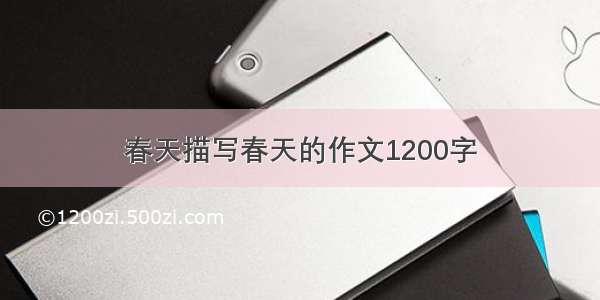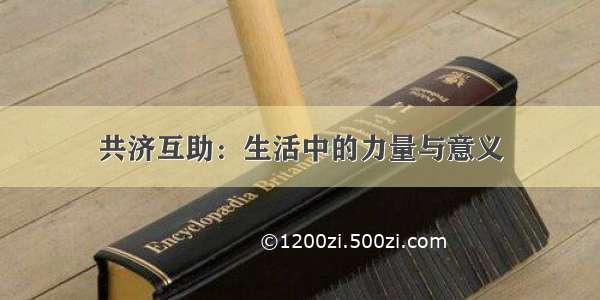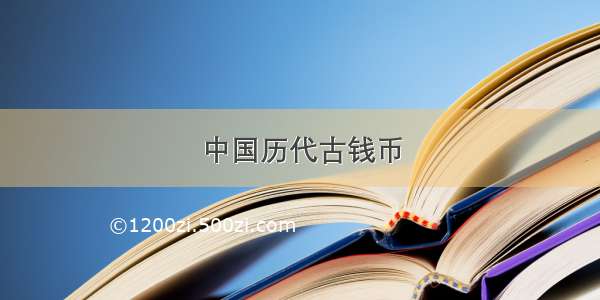
藏品描述
作为世界四大文明古国之一,中国的货币文明源远流长,在数千年的发展中,保持了自己独特的风格,迄今,中国人对[刀、布、蚁鼻、半两]这些拥有数千年历史的古代货币并不显得特别陌生,货币文化已经在各个方面深刻地影响了人们的生活。
中国古代货币起源于生产生活,最早的货币天然海贝道德被用作装饰品和图腾崇拜;刀、布、圜钱分别是刀削、铜铲、纺车的像形,直到公元前2,秦始皇才将货币统一为方孔圆形的秦半两,这种暗示天圆地方的货币形制此后一直沿用了2000多年。
中国货币文化丰富多彩,在许多方面都走在了世界前列。中国是最早使用货币的国家之一,同时也是最早使用铜铸币和纸币的国家。当马可·波罗把中国元朝使用纸币的情况告诉给他的祖国意大利时,人们普遍感到匪夷所思,其实,此时的中国使用纸币已经有三、四百年的历史。区别于西方人像浮雕式的铸币形式,中国古代货币以文字化为特点,这使得传统的书法艺术有了用武之地,中国古币普遍书法优美,以王莽时的[悬针篆]钱币和北宋时的[对品钱]为最高代表,潇洒飘逸,令人回味无穷。
中国历代古钱币是一个智慧的富矿,一座审美的乐园,越来越多的人对这些[麻麻钱]的感情开始升温,适合于这种需求,中国乃至全亚洲最大的古钱币公司—西安金泉钱币文化股份有限公司开发出这一镶嵌古代真品钱币的精美礼品,可以预期,他将以独特的文物性和无与伦比的升值潜力而受到爱好者欢迎。
As one of four countries with an ancient civiliation,China"s currency civilization goes back to ancient times,holding its distinctive styles in thousands years .Nowadays, Chinese people are not very unfamiliar with those ancient coins ,such as Dao Bi (knife-shaped coins),Bu Bi(shovel-shaped coin),Yi Bi Qian and Ban Liang Qian.Currency culture has deeply influenced people"s life in all aspects.
China"s ancient currency originated from people"s daily life and production For instance, sea shells,the earliest currency in history, were firstly used as decorations and totem; and Dao Bi(knife-shaped coin)was evolved from a hand tool "Xue",Bu Bi(shovel-shaped coin)was from bronze farm implement "Bu"and Huan Qian (ring-shaped coin)was patterned after spinning wheel.Till 221 B.C.,Emperor Qin Shihuang unified monetary system into round coins with a central square hole weighing half liang.This basically fixed China"s monetary form which underwent no major changes over 2,000-odd years since.
Rich and colorful Chinese currency culture makes China rank among the first countries in the world to use money,bronze coins and paper money,When the famous European traveler Marco Polo tole his fellowmen ltalians that people in the Yuan Dynasty made paper money from the bark, they thought that was unimaginable. Actually, till that time, Chinese had used paper money for 300 or 400 years,Different from western relief-formed coins, Chinese ancient coins pay much attention to characters punched on and the calligraphic styles. Xuanzhenzhuan in Wang Mang"s coins and the calligraphy in the Northern Song Dynasty are the most beautiful of all.
Ancient coins of Chinese successive dynasties,like a mine of intelligence,are atracting more and more people to be interested in them. In order to meet this demand ,Xi"an Jin Quan Coin Culture Co.,Ltd, the biggest ancient coin culture company in China and Asia, develops this exquisite present,with ancient coins attached .We can anticipate that fans will welcome it for its unique cultural features and its potential appreciation. 秦六铢半两
公元前2,秦始皇统一中国后,推行[书同文,车同轨],统一法令与度量衡。在货币方面,下令刻除六国旧币,将圆形方孔的秦[半两]钱定为全国唯一的法定货币,从而奠定了数千年中国钱币的形制,货币采用方孔圆形多数人认为是中国古人[天圆地方]宇宙认知观的一种表现,也有人认为这纯粹是铸钱工艺的一种需要,钱币铸好后需要成串儿地穿在一根方形铁棍上打磨边缘。
新莽货泉
西汉末年,篡权的王莽进行了四次违反经济规律的货币改革,十年间前后推出的各种货币达三十三种之多,其目的是通过发行一系列不足值的大额货币来强兑民间藏金,搜利民财。为推行新币,王莽甚至要求官员上朝时都要携带新币,百姓使用旧币五铢者,一律流放。莽钱在经济上是失败的,但铸造精致,书法优美,为后世称道。货泉是西汉末年王莽第四次货币改革的产物,钱文为流畅潇洒的悬针篆。
剪边五铢
东汉后期,货币流通混乱,使用足重的货币是相当吃亏的,民间通行将一枚完整的五铢钱从中凿开分别使用,其内中部分称为剪边钱,外缘部分称为綖环钱,这是一种人为的减重手段。
汉五铢
为解决连年战争引起的财政困难,汉武帝采取了新的经济政策,逐步将冶铁、煮盐与铸钱三大利收归朝廷官营。公元前1,汉武帝命令各郡国铸造一种[重如其文]的新钱币[五铢],不久又将铸币权收归中央,由世界上最早的国家造币厂上林三官统一铸造,进一步加强了货币铸造的标准化,为了防止磨钱盗铜,首次在钱的外缘加铸了轮郭。五铢钱是一种非常成功的货币,历史上共通行700多年,有[长寿钱]之誉。
隋五铢
隋朝以前,五铢钱已经行用了数百年,大小轻重各异。隋文帝杨坚新铸出隋五铢后,在全国各地关卡各置放一百个作为样钱以备对照,百姓所携之钱不合标准的就留下销毁。
这是封建王朝对五铢钱的最后一次挽救,经历着历史的风雨,纪重制钱币由于减重、成色参差等问题越来越表现出诸多缺陷和不适应性。
乾元重宝
铸于唐肃宗乾元年间,是最早的一种以“重宝”为文的钱币。乾元钱是唐政府为应付安史之乱时军费激增而开铸的,初为高值大钱,以一当十,以至引发了通货膨胀,后渐次减重如小平钱。
开元通宝
唐高祖武德四年(6),唐政府铸行了一种新钱[开元通宝],彻底摆脱了长期以来钱文纪重的格局,开[宝文钱]之先河,从而成为一种信用货币。开元通宝铸造时经过反复估算,规定每千文重六斤四两,由于换算出每十文重一两,也就是说,一两等于十钱,从此[钱]不仅仅是货币的名称,也成为重量的一个单位,这是我国古代两以下衡法演变为十进制的关键,原有的[锱]、[铢]等两以下单位逐渐被舍弃。宋代钱币
宋代是中国历史上铸钱业极为发达的时期,在数量和质量上都远远超过前代。宋钱铸量极大,全盛时每年高达550万贯,我国现存的古钱中,宋钱约占三分之一;年号钱、对子钱从宋代开始才真正盛行;宋钱铸工精良,钱文真、草、隶、篆各体兼备,且多出自帝王、名家之手,书法优美,艺术价值很高。宋钱铜、铁兼用,呈现出很强的地方性。特别值得一提的是,北宋时出现了世界上最早的纸币------交子,对人类货币史的发展起到了巨大的推动作用。
天圣元宝(公元10始)
宋仁宗天圣年间铸行,钱文真、篆成对。对钱系指相互对称之钱,其钱文、穿郭大小、字体肥瘦、起落笔位置、铸造工艺等相同,而书法异体,系宋钱一大特色。宋仁宗赵祯善“飞白书”,体势遒劲,极具功力,其御书的天圣元宝是北宋对品钱的开山之作。
祥符元宝(公元1008年始)
宋真宗大中祥符年间铸行。祥符本意为[祥瑞的符命],据史载,真宗当朝时在皇宫中发现了名为[大中祥符]的天授神书,被认为是天下太平的祥瑞之兆,因而改元铸钱以示庆贺。
天禧通宝(公元10始)
宋真宗赵恒年间所铸。
皇宋通宝(公元1039年始)
宋仁宗赵祯年间铸行,有真、篆两种书体,是北宋最早刻意追求的对品钱之一。
元丰通宝(公元1078年始)
元丰为北宋神宗第二个年号,寓意“大而茂盛”。元丰年间,禾谷大熟,百业俱利,北宋国力达到全盛,社会经济十分繁荣,当时全国设钱监二十六座,年产铜铁钱达七百余万贯,是我国古代铸钱业最为发达的时期。
熙宁元宝(公元1068年始)
宋神宗熙宁年间铸行,钱文有真隶篆行四体。神宗即位后,任用王安石推行变法,力图改变积贫积弱的局面,变法虽然受到守旧派的阻挠和反对,没有得到彻底的贯彻执行,但在振兴经济方面依然获得了相当成效。
元祐通宝(公元1086年始)
宋哲宗赵煦登基时年仅十岁,军国政事由高太后垂帘掌握。守旧派势力一执政,即全盘否定和刻除神宗时的一系列新法,将变法派逐出朝廷,史称[元祐更化],[元祐通宝]的钱文是由司马光和苏轼所书,于平淡之中见书圣奇气。
圣宋元宝(公元1101年始)
宋徽宗赵佶即位的第一个年号为建中靖国,年号太长,不适合用于钱文,因此铸“圣宋元宝”,这是徽宗一朝唯一的非年号钱。
大观通宝(公元1107年始)
宋徽宗大观年间铸行,徽宗博学多才,娴于书画。其楷书自成一体,人称“瘦金体”,清劲秀美,超凡脱俗,为书中奇葩。徽宗年间所铸钱均精美超群,“大观通宝”钱文为瘦金体,铸工上佳,极为后世推崇。
绍圣元宝(公元1094年始)
宋哲宗绍圣年间铸行。哲宗亲政后,明令绍述神宗机关报法,起用新党,并改元绍圣,系[绍述圣业]之意。
永乐通宝
明成祖朱棣永乐年间铸行,永乐钱书体工整,铸造精好。因朱棣开海禁,通贸易,永乐钱因而大量流散海外,遍布南洋各国。为避明太祖朱元璋名讳及前朝国名,明代钱币一律称[通宝],而不用[元宝]。
利用通宝
清初吴三桂因军功受封为平西王,驻守云南。吴三桂拥兵自重,图谋不轨,除每年向清廷索要大量经费外,还利用云南多铜的特点,自行铸造利用通宝使用。康熙十二年,吴三桂联合耿精忠、尚之信起兵反清,史称三藩之乱。
洪化通宝
公元1679年始铸,吴三桂死后其孙吴世璠继位,改元洪化,并铸洪化通宝,其风格与利用通宝类似。
崇祯通宝
明朝嘉靖年间,中国人熟练掌握了铜锌合金—黄铜的冶炼法,由于黄铜较之青铜具有色泽金黄、高硬度及高耐磨度的特点,被广泛用于铸钱。崇祯通宝为明思宗崇祯年间铸行,其时明王朝内忧外患加剧,为应付浩大军费,自崇祯三年(1630年)起减重铸钱,此后钱法日乱,传世崇祯钱文字纷乱,版式极为复杂。康熙通宝
清圣祖康熙年间(公元1662-17)铸行。康熙年间政治清明,国秦民安。因此铸钱厚重圆大,质胜前代为民所乐用。多数康熙钱的背面为满文纪局,这是历史上第一次少数民族与汉族的文字共同出现在全国性的钱币上,反映了中华民族的大融合。
嘉庆通宝
清仁宗嘉庆年间(公元1796-18)铸行,背满文纪局,共十九局。嘉庆在位期间吏治腐败,武备废弛,清朝统治日渐衰落,反映到钱币上也开始出现减重现象。
乾隆通宝
清高宗乾隆年间(公元1736-1795年)铸行。背满文纪局,共二十四局。乾隆在位的六十年是清朝国力鼎盛的时期,各地广置钱局,铸量很大,版式极多。乾隆钱的成色先后不同,五年以前,铸钱不加锡,称为黄钱,五年以后加锡百分之二,称为青钱。铸造青钱是为了防止私销,据说将青钱投入炉内融化,铸出的器皿一击即碎,不能使用。
道光通宝
清宣宗道光年间(公元1821-1850年)铸行。背满文纪局。由于鸦片的大量输入,巨额白银外泻,千文铜钱一两纹银的比率难以维持,银贵钱贱,损害了广大劳动人民的利益,加剧了社会矛盾。
光绪机制铜元
光绪二十六年(1900年)广东开铸中无方孔的“光绪元宝”铜元,开我国机制铜元之先河。由于机制铜元图案新颖,质量稳定,一面市就大受商民欢迎。光绪通宝
清德宗光绪年间(1875-1908)铸行,背满文纪局。光绪年间铜钱日趋式微,各地铸钱轻重大小不一,兼之机制铜币以及银币的大量使用,传统铜钱已被逐渐取代。
民国铜元
辛亥革命之后,国内军阀割据混战,均以铸造铜元为筹措军政费用的重要手段,其所造铜元面值成色各异,质量粗劣,加剧了铜元流通的混乱局面。
中央银行纸币
民国十七年(1928)11月1日,中央银行在上海开业。1935年11月4日起,国民政府在全国范围内实行[法币政策],将四大行所发行的纸币定为法定货币;同时放弃银本位。1942年7月1日,政府宣布将全国货币发行权集中归于[中央银行]一家,从此纸币多种发行制的历史宣告结束。English:
Qin Liu Zhu Ban Liang
In 221 B.C. Emperor Qin Shihuang unified China,and then standardized the Chinese written language.measurement and the span of cart axles.He abolished all the existing monetary forms of the other six states and ordered the round-shaped and square-holed "Ban Liang "as the legal currency that basically fixed Chinese monetary forms for thousand years .The ancients regarded that "than yuan di fang", that means the round shape represents the heaven and the square the earth. Some believe that a cluster of coins with a square hole in the center are easy to be fixed in an iron role to polish their rims instead of those with a round hole.
Han Wu Zhu
In order to solve the financial diffculties the wars caused. Emperor Wu Di of the Western Han Dynasty practiced new policy to take the right of smelting iron,abstracting salt and coining back to the court. In 118 B.C.,he ordered the prefectures to mint a new kind coin weighing 5 zhu,named "Wu Zhu";and centralized the casting right only to Shang Lin San Guan,the first national mint in the world, before long To prevent people to obtain bronze from the coins, Wu Zhu was minted with a rim ,This kind of money was in circulation for over 700 years,with the honor of "the long-lived money"in Chinese history.
Huo Quan of the Xin Period
In the last years of the Western Han Dynasty,Wang Mang,originally a relative of an empress in the Han Dynasty,seized the throne and carried out monetary reforms less than in ten years,namely issuing coins with different shapes, qualities and units for more than 33 kinds, The aim of the reforms was to extort money from the people with a series of big face value coins ,He even asked the officials to take new coins when they went to the court, Though Wang Mang"s monetary reforms all destroyed economy finally,the calligraphy punched on his coins were highly praised by the later generations. Huo Quan was the product of the fourth monetary reform, stamped with characters in beautiful xuanzhenzhuan.
Jian Bian Wu Zhu
In the late period of the Eastern Han Dynasty,the coinage was in a very chaotic station. So in order to obtain bronze,people cut off the rim of a Wu Zhu coin, thus one became two ,The outer one like a ring was called"Yan Huan coin" and the inner one without rim named "Jian Bian coin". Sui Wu Zhu
Befor the Sui Dynasty,Wu Zhu coins with different sizes had been in circulation for several hundred years.As the establishment of the Sui Dynasty,Emperor Wen Di,Yang Jian,ordered to mint uniform and exquisite Sui Wu Zhu, set a sample coin in toll-gates to verifty whether the coins in the folk were standard or not ,Those unqualified were kept,This was the last time the feudal dynasty tried to reform and to keep Wu Zhu coins that later showed more and more shortcomings.Kai Yuan Tong Bao
In the fourth year of the Wu De reign of Emperor Gao Zu in the Tang Dynasty(621 A.D),the government began to issue a new type of coin---Kai Yuan Tong Bao.Ever since then,coins were no longer named after weight ,but named Tong Bao,Yuan Bao or Zhong Bao,which initiated the credit currency times in Chinese history,And,the government stipulated that ten wen(pieces)of Kai Yuan Tong Bao weighed one liang (tael)and a wen weighted one "qian(money)" that later not only referred to money,but also weight unit.Qian Yuan Zhong Bao
Issued in the Qian Yuan reign of Emperor Su Zong of the Tang Dynasty,Qian Yuan Zhong Bao was the first coin named"Zhong Bao",in Chinese history.The issue of such coins was to deal with the military expenditures to suppress "the rebellion of An Lushan and Shi Siming",At the beginning.one piece of Qian Yuan Zhong Bao could exchange ten cashes,but later also became average coins.
Coin of the Song Dynasty
Coin production reached its peak in the Song Dynasty,with a production of 5.5 million guan annually, Among the extant ancient coins nowadays, about 1/3 are the money of the Song Dynasty,Year-titled coins and pair coins also were very popular during this period.Coins of the Song Dynasty were exquisitely made and stamped with inscriptions written in various calligraphic styles (like regular script,cursive script,official and seal scripts)by the emperor himself or by famous literati,In addition ,iron coins and paper money also appeared and the later one propelled the currency development greatly.
Xiang Fu Yuan Bao (issued from 1008 A.D.)
Minted in the Da Zhong Xiang Fu reign of Emperor Zhen Zong of the Song Dynasty."Xiang Fu"means auspicious sign in Chinese.According to historical records, the emperor found a letter named Da Zhong Xiang Fu awarded by a god in the palace and considered that was an auspicious sign of a peaceflu country, hence the casting of Da Zhong Xiang Fu to celebrate.
Tian Xi Tong Bao(issued from 1017 A.D)
Minted in the reign of Emperor Zhen Zong,Zhao Heng,of the Song Dynasty.
Tian Sheng Yuan Bao (issued from 1023 A.D)
Minted in the Tian Sheng reign of Emperor Ren Zong of the Song Dynasty and with inscriptions written by the emperor himself in zhen shu (regular script)and zhuanshu (seal script) respectively. It was the Song"s earliest Dui Qian,pair coins with identical inscription in dirrerent calligraphic styles,but the same size, thickness and shape.
Huang Song Tong Bao(issued from 1039 A.D)
Issued in the reign of Emperor Ren Zog,Zhao Zhen,of the Northern Song Dynasty and one of Dui Qian written in regular and seal scripts respectively in this period, Dui Qian means pair coins with identical inscription in different callgraphic styles, but the same size thickness and shape.Xi Ning Yuan Bao (issued from 1068 A.D) Issued in the Xi Ning reign of Emperor Shen Zong of the Northern Song Dynasty in four calligraphic styles;regular script,official script,seal script andrunning hand ,After the enthronement of Emperor Shen Zong ,he appointed Wang Anshi to practice reforms that were against by the conservatives,but succeeded a lot in economy.Yuan Feng Tong Bao (issued from 1078 A.D)
Yuan Feng ,the second year title in the reign of Emperon Shen Zong, implies a meaning of grandness and thriving, Social economy reached ite heyday in this period when twenty-six mints all over the country produced more than 7 million guan coins annually,the most prosperous time in coin production in Chinese history.
Yuan You Tong Bao (issued from 1086 A.D)
Emperor Zhe Zong was only ten years old when he came to the throne, so Empress Dowager Gao controlled the millitary affaires and politics ,These conservatives were wholly against the reforms in the reign of Emperor Shen Zong and expelled the reformers out of the court. The inscription stamped on Yuan You Tong Bao was written by famous literati Sima Guang and Su Shi.
Shao Sheng Yuan Bao (issued from 1094 A.D)
In the reign of Emperor Zhe Zong.Empress Dowager Gao dominated the court, After the death of the empress,Emperor Zhe Zong set up his own cabinet and changed the year title into Shao Sheng that means inheriting the property and family estate.
Sheng Song Yuan Bao (issued from 1101 A.D)
The first year-title in the reign of Emperor Hui Zong was jian Zhong Jing Guo, too long to name a coin So the emperor changed the coin name into Sheng Song Yuan Bao ,the only coin not named after year title in the reign.
Da Guan Tong Bao (issued from 1107 A.D)
Emperor Hui Zong, an erudite person,was very adept at calligraphy and painting,His famous calligraphy Shou Jin Ti bears flowing and graceful features.The inscription on Da Guan Tong Bao was written in Shou Jin Ti that was highly praised by the later generations.
Yong Le Tong Bao
Issued in the Yong Le reign of Emperor Cheng Zu,Zhu Di,of the Ming Dynasty,Because the emperor encouraged sea trade, a great deal of exquisitely made Yong Le coins flowed to overseas,Also,coins in this period were all named Tong Bao instead of Yuan Bao to avoid the taboo on the name of Emperor Tai Zu,Zhu Yuanzhang.
Chong Zhen Tong Bao
Chinese people had mastered the brass melting technique in the Jia Jing reign of the Ming Dynasty, Chong Zhen Tong Bao was issued in the Chong Zhen reign of Emperor Si Zong when the country was beset with domestic troubles and foreign invasion. To meet vast military expenses,from the third yaer of the Chong Zhen reign (1630),Chong Zhen Tong Bao was minted with lighter weight and complicated denominations.Li Yong Tong Bao
At the beginning of the Qing Dynasty,Wu Sangui was conferred the title of King Pingxi to defend Yunnan. In the twelfth year of the Kang Xi reign(1673),he allied with Geng Jingzhong andShang Zhixin to rebel against the Qing court, known as "the Revolt of the Three Feudatories"in history,and minted Li Yong Bao to meet the military need.
Hong Hua Tong Bao
Hong Hua Tong Bao was issued from 1679.Wu Shifan succeeded to the throne after his grandfather Wu Sangui"s death and altered the year-title to Hong Hua.Hong Hua Tong Bao was very similar to Li Yong Tong Bao.
Kang Xi Tong Bao
Kang Xi Tong Bao was issued in the Kang Xi reign of Emperor Sheng Zu(1662-1722 A.D),with the mint"s name in Manchu on the reverse side,which reflected the unification of all nationalities,In this period,the country was prosperous and the people lived in peace,so coins were cast thick and big.
Qian Long Tong Bao
Qian Long Tong Bao was issued in the Qian Long reign of Emperor Gao Zong of the Qing Dynasty(1736-1795A.D), stamped with the mint"s name (total twenty-four mints)in Manchu on the reverse,During the sixty-year Qian Long reign,the nation was at the height of power and splendor,Mints scattered all over the country to produce coins with various denominations on a large scale.And ,the brass purity in Qian Long Tong Bao was not same,Befor the fifth year of the Qian Long reign ,coins were made of brass,without ingredient tin,But after that year,coins were cast with2 per cent of tin, named "qing qian"(black money),just to prevent private casting. It was said that if to put "qing qian"into a smelter,it would not been minted again.
Jia Qing Tong Bao
Jia Qing Tong Bao was issued in the Jia Qing reign of Emperor Ren Zong of the Qing Dynasty(1796-1820)and cast with the mint"s name (total nineteen mints)in Manchu on the reverse.The lighter and lighter coins in this reign reflected the corrupt administration of officials.
Dao Guang Tong Bao
Guang Xu Tong Bao was issued in the Guang Xu reign of Emperor De Zong of the Qing Dynasty(1875-1908 A.D), and cast with the mint"s name in Manchu on the reverse side, In this period,machine-made copper coins and silver coins gradually replaced the miscellaneous traditional copper coins.
Machine-made Copper Coin in the Guang Xu Reign
In the 26th year of the Guang Xu reign(1900),Guangdong Province began to mint round-shaped Guang Xu Yuan Bao without a hole in the center,which marked the beginning of machined-made coins. The people welcomed these exquisitely made coins as soon as they were put into market.
Copper Coin of the Republic of China
After the Revolution of 1911,the whole country fell into a disordered state of separatist warlord regimes that all tried to cast their own money to meet the need of military expense. Their coins with kinds of denominations and inferior qualities aggravated the chaotic situation.
Bank Note Issued by the Central Bank
The Central Bank opened for business in Shang hai on November 1,1928.On November 4,1935,the Kuomintang Government practiced the "Fa Bi(legal tender)Reform"all over the country and abandoned silver standard as well, On July 1,1942,the government centralized the issue right only to the Central Bank.
藏品相册

